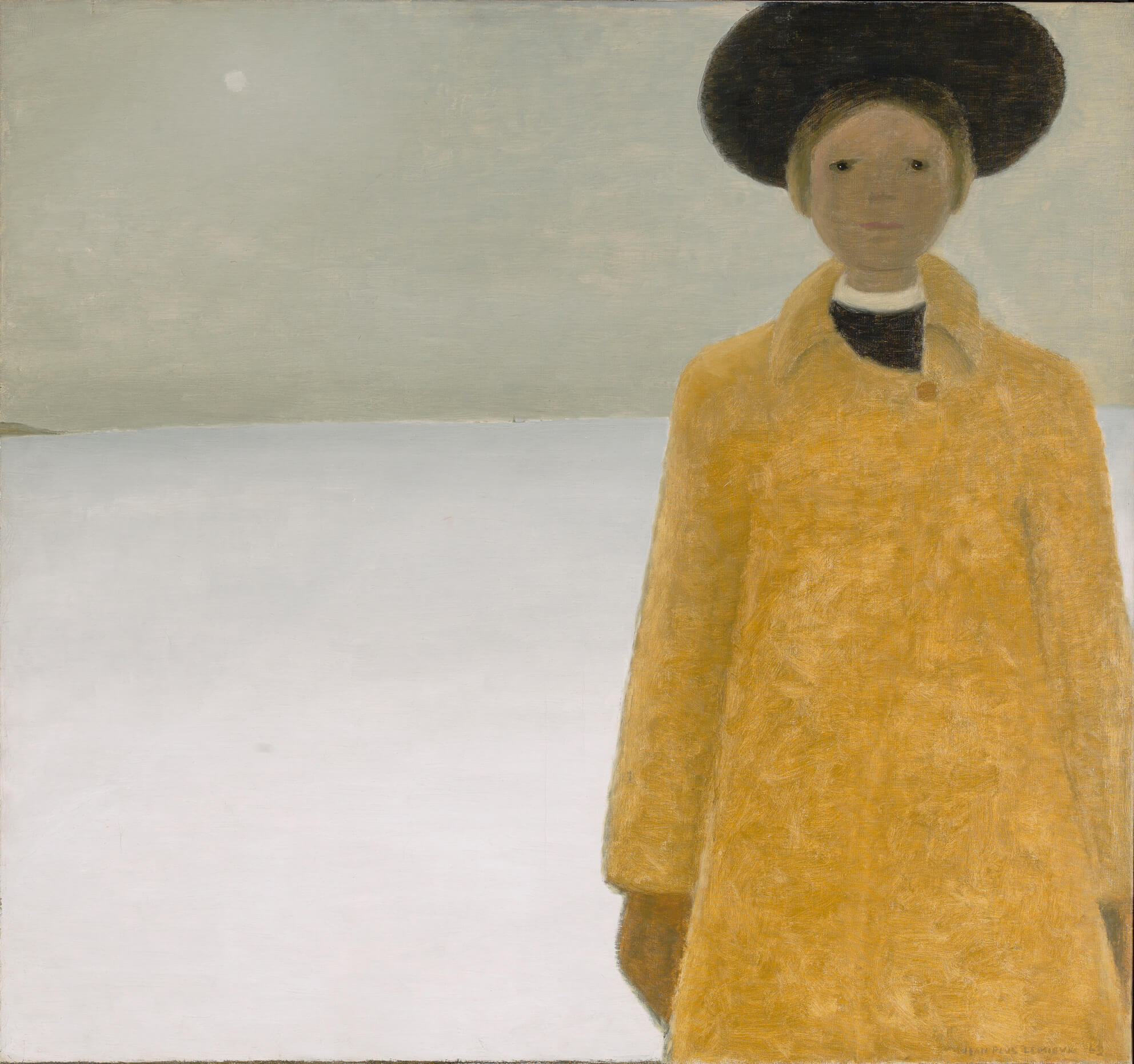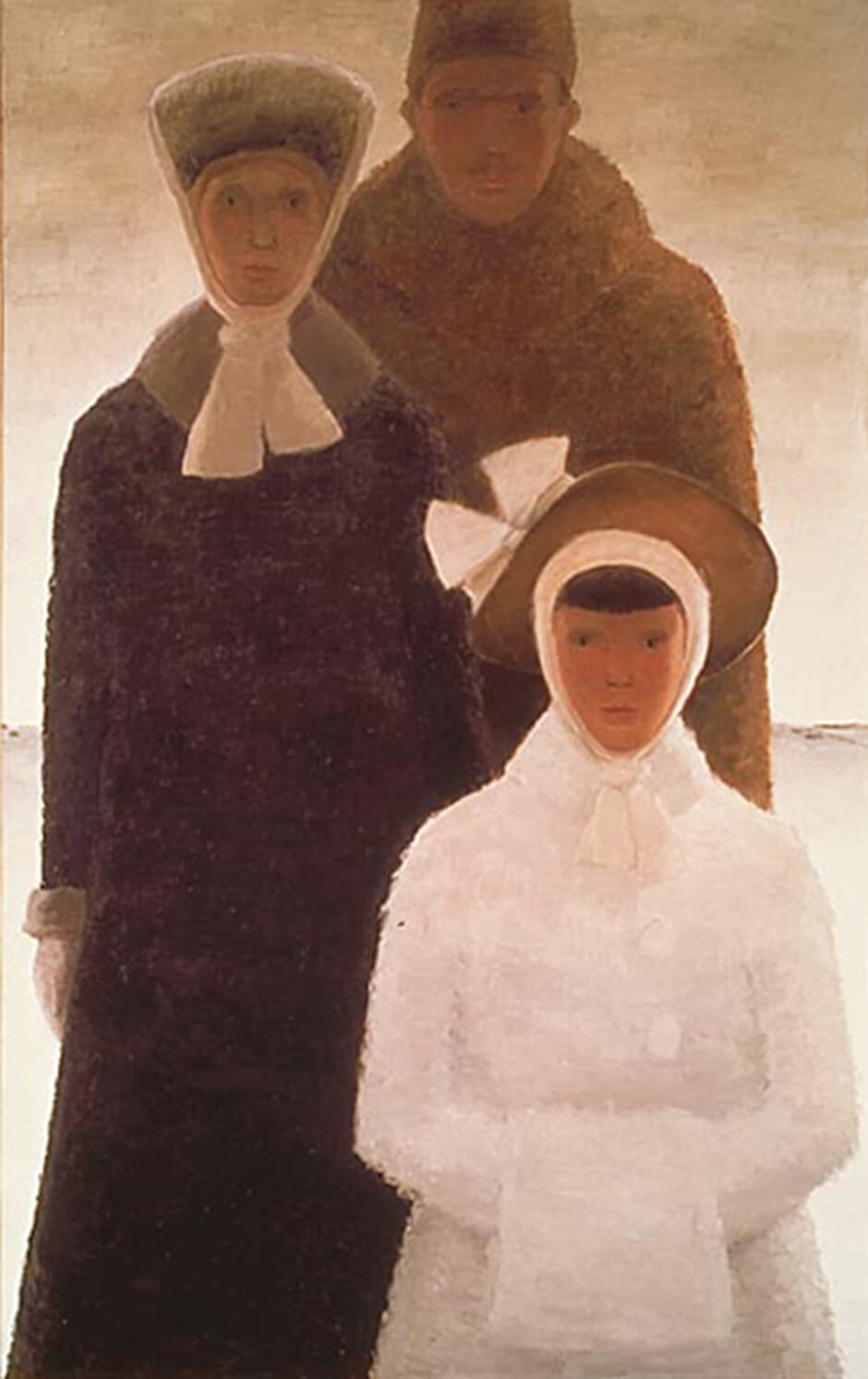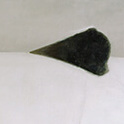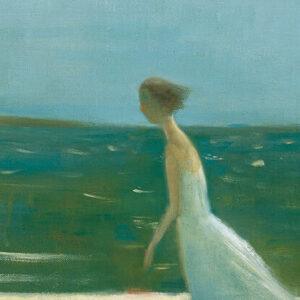Julie and the Universe 1965

Jean Paul Lemieux, Julie and the Universe (Julie et l’univers), 1965
Oil on canvas, 104 x 142.5 cm
Pierre Lassonde Collection
Julie and the Universe, with its deserted, snowy landscape, is a quintessential example of Jean Paul Lemieux’s classic period (1956–1970). The artist was at the height of his expressive powers in 1965 when he painted this picture. At sixty years old, he had just retired from teaching at the École des beaux-arts de Québec, and he welcomed his liberation with joy. He was now free to devote all his time to painting.

During these years Lemieux drew inspiration from a number of themes, of which the notion of time passing was the most significant and the most sustained. He produced scenes featuring characters of all ages, from childhood to old age. An entire small world of anonymous humanity springs to life on his canvases. Sometimes he looks deep within his own past, evoking memories, as with 1910 Remembered, 1962, and Autoportrait, 1974. His figures are almost always allegories of time: young or old, man or woman, each stands alone against an empty backdrop, fixing the viewer with an intense gaze as if longing to speak to us.
So it is with Julie and the Universe, a painting that has become an icon of Lemieux’s pictorial maturity. The universe is the land, vast and cold in its winter whiteness. Julie is an emblem of youth, a time when everything is possible. A vertical presence, facing front, she holds us with the openness and candour of her gaze. The warm colour of her coat seems to project her forward; behind her, the low light of a clouded sun defines the landscape. Time and space are masterfully evoked here, and the exchange is richly rewarding.

It is no surprise that this painting, which has appeared in many exhibitions, was an immense success both in Canada and internationally, notably in Russia in 1974. Nor is it surprising that the image figures in the Quebec singer-songwriter Jean Lapointe song 1910 Remembered, a poetic summation that admirably captures the essence of Lemieux’s relationship with time, space, and solitude.
He created characters
Who seek but never find one another
Faceless strangers
Who dream of talking to each other
Surely there is too much space
For them to ever hope to meet
And I think that the passage of time
Has put too much distance between themThis morning, they were seen
Crossing a vast, snowy plain
In a most beautiful procession
All heading for the same train
They are going to a party
For Julie and the universe
Their heads full of memories
Of a time when everything was clear.– Excerpt from “1910 Remembered”, 1981, Marcel Lefebvre and Jean Lapointe

 About the Author
About the Author
 More Online Art Books
More Online Art Books
 Acknowledgements
Acknowledgements